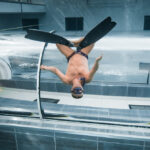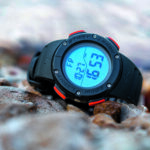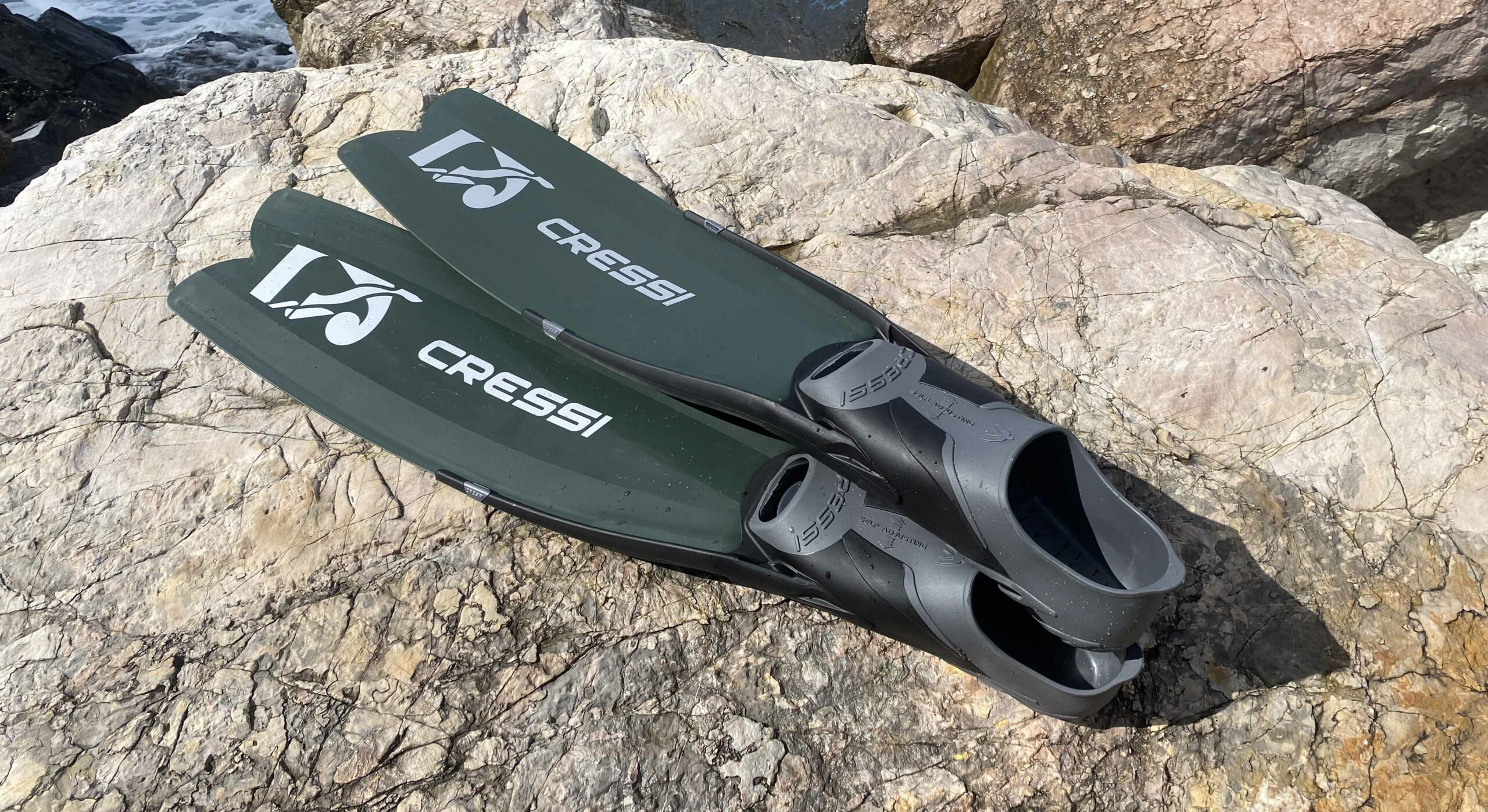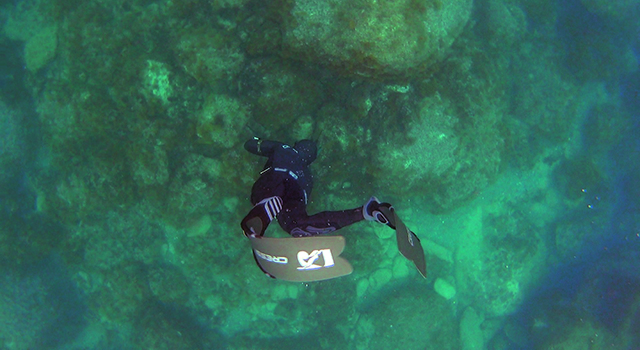CRESSI: Gara Modular Boost

With Genoni Discovering Deep Pools Around the World
14 June 2024
H.DESSAULT: Computer Stark
19 June 2024These new fins are an evolution of the Impulse project and are particularly striking for the foot pocket, which is incredibly comfortable. The blade ends in a swallowtail and is thin and responsive
Max Tavernari
In the history of apnea fins, those "branded" Cressi have perhaps been the most appreciated for the comfort of the fit and the quality of the materials used in the production of the foot pockets. So much so that, thanks to the wise combination of different thermoplastic rubbers, those who have always used them even during normal training sessions in the pool, unlike what happens with almost all other fins, can avoid wearing socks without fear of annoying abrasions to the feet.
In this new model, the company's technicians have not only succeeded in maintaining all the valuable characteristics typical of its foot pockets and, as far as possible, even improving them, but thanks to an in-depth technological study of the blades, both from the functional point of view and for the materials used, they have created a product that is decidedly surprising under many points of view and destined, in my opinion, to carve out a considerable space in the technopolymer market.
The blades, characterized by the classic swallowtail tip, a distinctive sign of Cressi, which by channeling the water allows for greater symmetry in the longitudinal thrust, are distinguished above all for their design and shape, thanks to a wider central part that narrows towards the swallowtail. The compound, in this case of a dark green color, made of elastomerized technopolymers, developed exclusively by Cressi, is characterized by an extremely thin differentiated thickness, which guarantees incredible lightness and an excellent elastic response.
The Gara Modular Boost takes advantage of a revolutionary S-shaped wave deformation technology, which allows during the thrust phase to accumulate a considerable elastic energy in the blade, which is then released in the return phase. This is why, even having a plastic blade, it reduces leg fatigue without compromising performance.
Speaking of the foot pocket, I was immediately struck by the great softness of the materials used, a guarantee of greater comfort, obviously combined in different hardnesses, each distinguished by different colors: gray for the softer rubber and black for the more consistent one, in order to guarantee an optimal transmission of force from the leg to the blade. It should be noted that the Self Adjusting system integrated into the foot pocket, precisely thanks to a particular interweaving of rubbers with different hardnesses, allows for easy adjustment of the foot pocket to the width of the foot,without compromising comfort.
The side rails, laterally constrained by two special inserts, reach about halfway up the blade but, being made of technopolymers with high flexural modulus elastomeric fillers, do not stiffen it particularly, allowing it to flex excellently.The foot pocket is then centrally connected in the lower part of the blade through a plastic plate and two screws.
In general, the fit is more spacious than other Gara models and, probably, also compared to other foot pockets on the market, so much so that wearing a 3 millimeter sock (a 46/47), it surprised me a little, resulting a little wide even though I have a size 47 foot. Not a problem at all since the new Gara Modular Boost fins come with a pre-shaped insole in anti-corrosion plastic, completely recycled, which can be inserted into the foot pocket and which improves the performance of the finning even when using thinner socks in temperate waters. The insoles are right and left and can be cut into their shape in three different sizes, according to the pre-printed guidelines.
In the water, I subjected the fins to more than one particularly demanding test, starting from the ground, as during a selection and moving a few kilometers along the coast, immersing myself at a good pace on medium depths, from 5 to 20 meters. The season is still characterized by typically winter conditions and despite the set-up in the water, with a heavy wetsuit and many weights in the belt, not helping agility in movements, these Cressi at the feet are really light compared to other models in the same category. The horizontal thrust is powerful, but does not particularly tire the leg, so it well supports even long-lasting movements and guarantees good speed. During the tests, I found conditions of strong current that put the new Gara Modular Boost to the test, but despite this I managed to effectively counteract it without any particular problems.
Vertically, the quality of the foot pocket, combined with the use of the insoles, allows for perfect adhesion and foot comfort, guaranteeing optimal power transmission and making the fin particularly effective. The technical solutions and the structural design of the blade guarantee remarkable responsiveness considering that we are talking about a technopolymer product, guaranteeing good performance both in the descent and ascent phases, even in the presence of significant weighting.
Standard Equipment
The Gara Modular Boost fins come pre-assembled from Cressi, inside a plastic bag with handles. The package includes a pair of insoles, adaptable to all footwear. The foot pockets can be easily disassembled from the blades using two central screws and the side attachments on the side rails; this allows the blade to be replaced with another Cressi blade of a different color or material, such as carbon fiber.
Trim
When submerged, the fins feel light and do not weigh down the legs. In fact, thanks to the materials used, they have good buoyancy. Therefore, for ambushes and waiting in shallow water, typical of the winter period and its prey, the use of ankle weights is recommended to achieve better trim during the action.
Finishes and Materials
For being a product that falls into the economic range of apnea fins, the design study, the materials used and the technological solutions adopted make them a truly captivating product to the eye, especially in the attention to detail. The green color lends itself well to camouflage on most of our rocky seabeds, while the Cressi logos (present on both the front and back of the blades) create a beautiful personalization effect overall.
Technical Data Sheet
Blades: in a compound of elastomerized technopolymers with differentiated thickness developed by Cressi; swallowtail design in the terminal part Foot pockets: obtained through the combination of different types of flexible thermoplastic rubber with differentiated hardnesses and equipped with the Self Adjust system Side rails: in technopolymers with elastomeric fillers with a high flexural modulus
Color: dark green with light gray logos on the front and back Blade length: 65 cm (from the foot pocket attachment)
Total length: 98 cm
Maximum width at the central point: 21 cm
Side rail/foot pocket length: 29 cm
Bending angle under the foot pocket: 29 degrees
Ratings!
Design: 8 Beautiful and unique. It characterizes the company's new fins and distinguishes them from all the others. In this case, dark colors that are well suited for fishing use
Materials: 8 From the rubbers used for the foot pocket mold to the elasticized technopolymers for the creation of the blades, everything has been carefully researched and studied to guarantee distinctiveness and quality
Comfort: 9 The fit of the foot pocket is optimal, adapting perfectly to any foot. Truly top-notch
Performance: 7.5 Obviously they cannot be compared to carbon fiber models, but even though they are technopolymer fins, the lightness of the assembly and the good responsiveness characterize their performance upwards
Quality/price ratio: 8 Cressi has managed to infuse all its experience into this fin, equipping it with technological solutions derived from the higher-range models. It has done all this while managing to maintain a truly interesting price, 114.99 euros.



